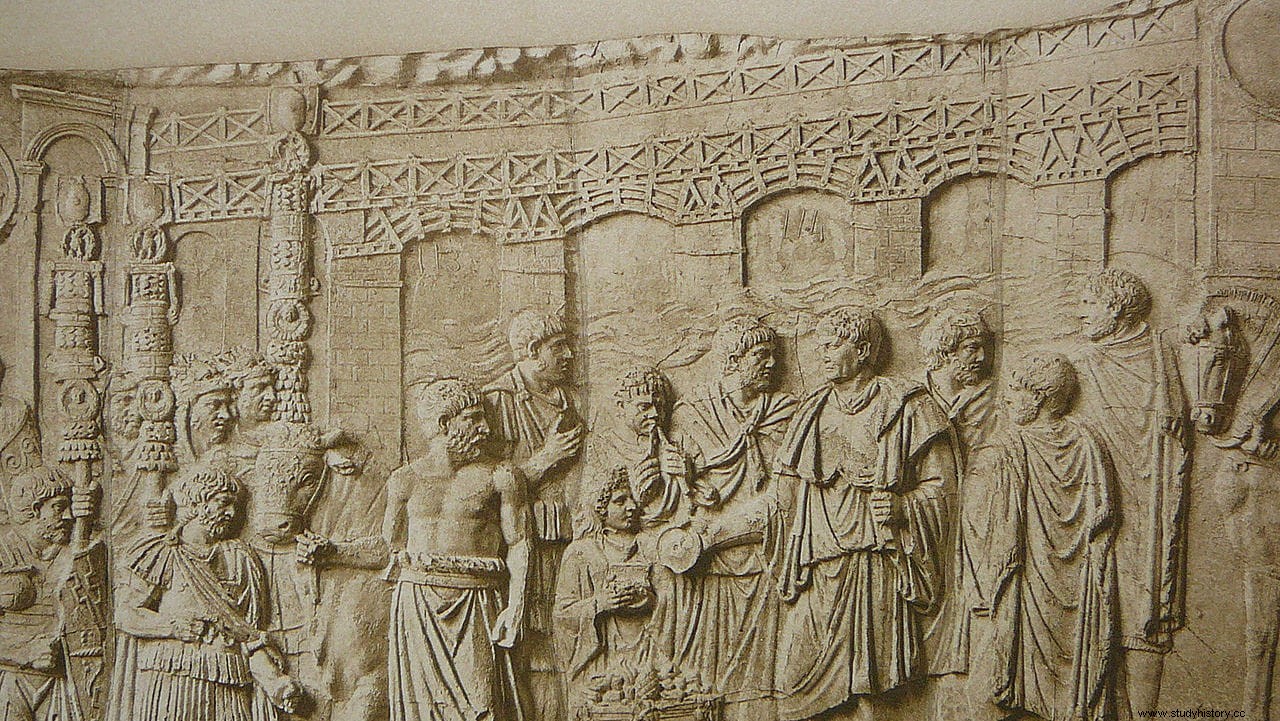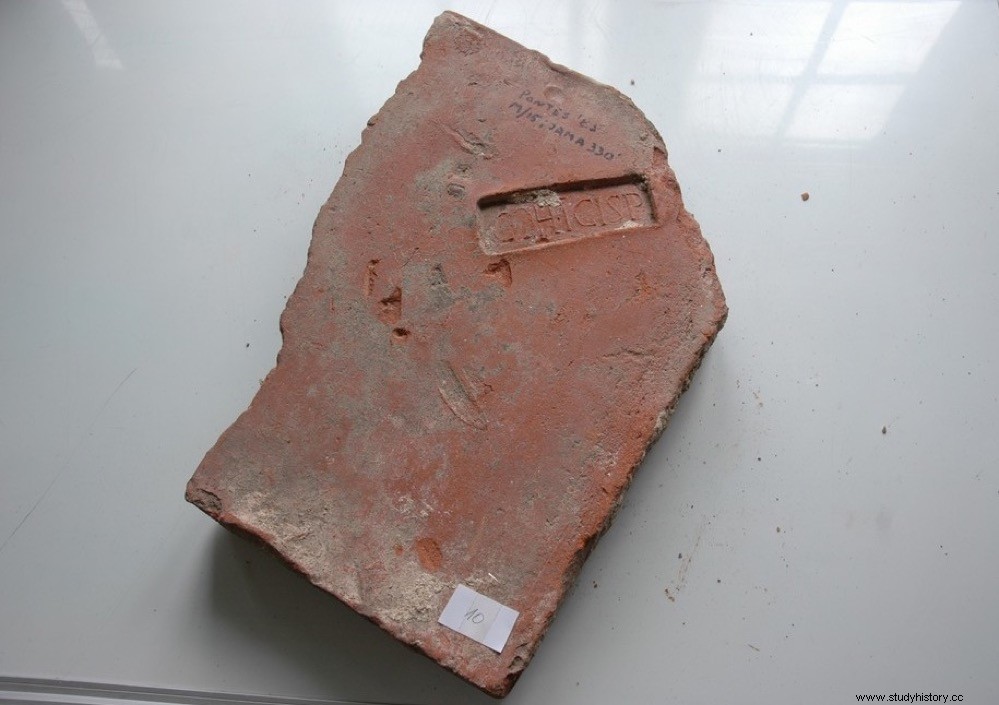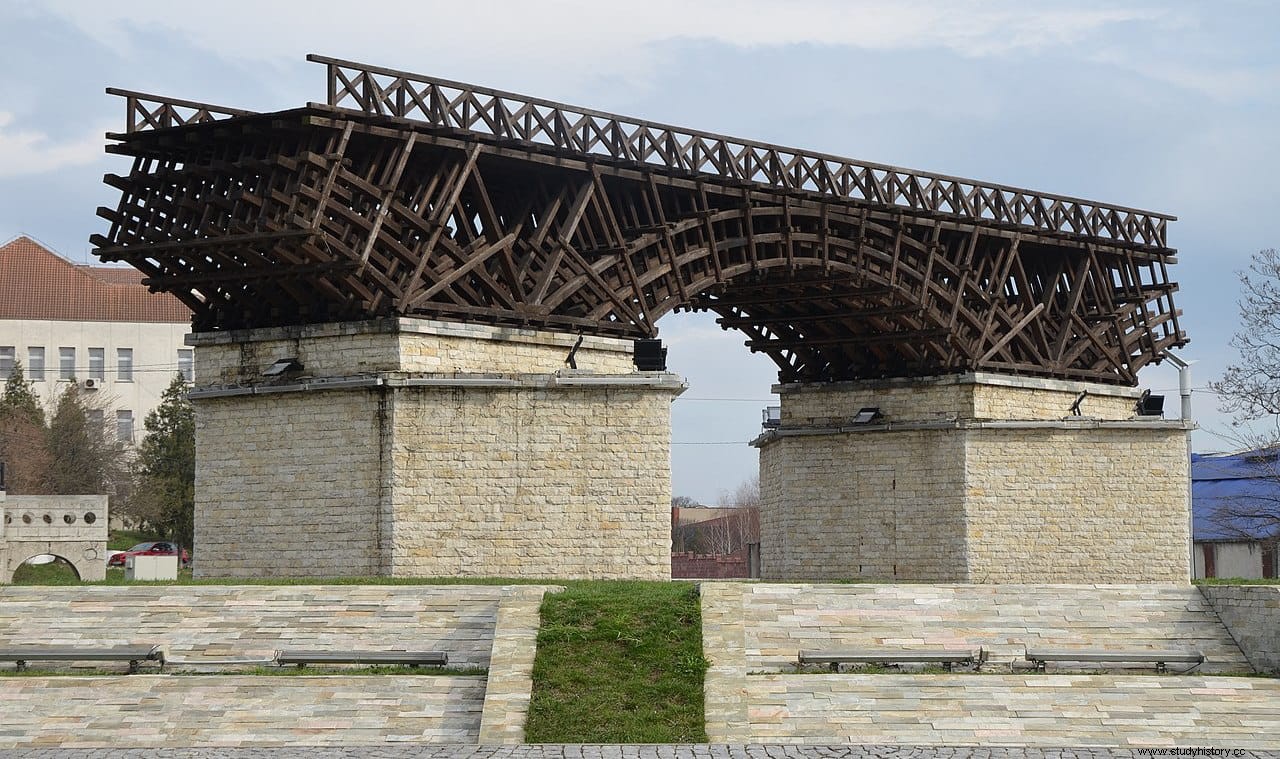In the year 103 AD Emperor Trajan ordered the construction of a bridge over the Danube River that would serve to cross and supply the troops in the imminent Second Dacian War against Decebalus, for which he was preparing the largest army since the time of Augustus, some 150,000 men.
The person in charge of projecting and erecting it was the architect Apollodorus of Damascus, to whom the Pantheon is also attributed, and who was the emperor's favorite architect since his are also the baths, the forum, the market and Trajan's column.
It was situated near the modern Romanian town of Drobeta-Turnu Severin, east of the Iron Gates, the natural canyon of the Danube that runs parallel to the border with Serbia. Its construction was completed in the year 105 AD, constituting one of the most outstanding engineering works of antiquity.

It was 1,135 meters long by 14.55 meters wide and 18.60 meters high from the water, in an area where today the river is 800 meters wide. It extended on 20 masonry pillars of brick, mortar and pozzolanic cement joined by segmental arches of oak wood at intervals of 50 meters.
The bricks that form the pillars, some of which have been found, have great historical value, as the soldiers who participated in their construction carved the names of their units on them.

For this reason, it is known that the legions IV Flavia Felix, VII Claudia, V Macedónica and XIII Gémina participated in the construction of the bridge, as well as cohorts from I Cretum, II Hispanorum, III Britorum and I Antiochensium.
On both sides of the bridge two separate castra rose (fortified camps, singular castrum ), so to cross the bridge it was necessary to cross the castra , remnants of which are still visible today.
We know what the bridge looked like from classical sources, and especially from Dio Cassius who, in his Roman History details its technical characteristics. But also because his representation appears on the Trajan column in Rome.

Still today, both on the Serbian and Romanian shores, the remains of the vaulted arcades that gave access to the bridge can be seen.
Although the bridge was only functional for a few decades, for more than 1,000 years it was the longest arch bridge in the world. It is not known exactly when, but there is evidence that the emperor Hadrian ordered the demolition of its upper structure to prevent the barbarians from crossing it.

Some historians believe that it was only a temporary measure, and that the bridge could be used again during the reigns of Diocletian and Constantine. The Byzantine writer Procopius wrote that by his time, the 6th century AD, the bridge was already in ruins.
The pillars were submerged, reappearing in 1858 due to the drought that lowered the flow of the river to levels never seen before. Two of them were shot down in 1906 to facilitate navigation. In 1932 there were 16 pillars left, but in 1982 only 12 could be found, possibly the others were washed away by the current.
